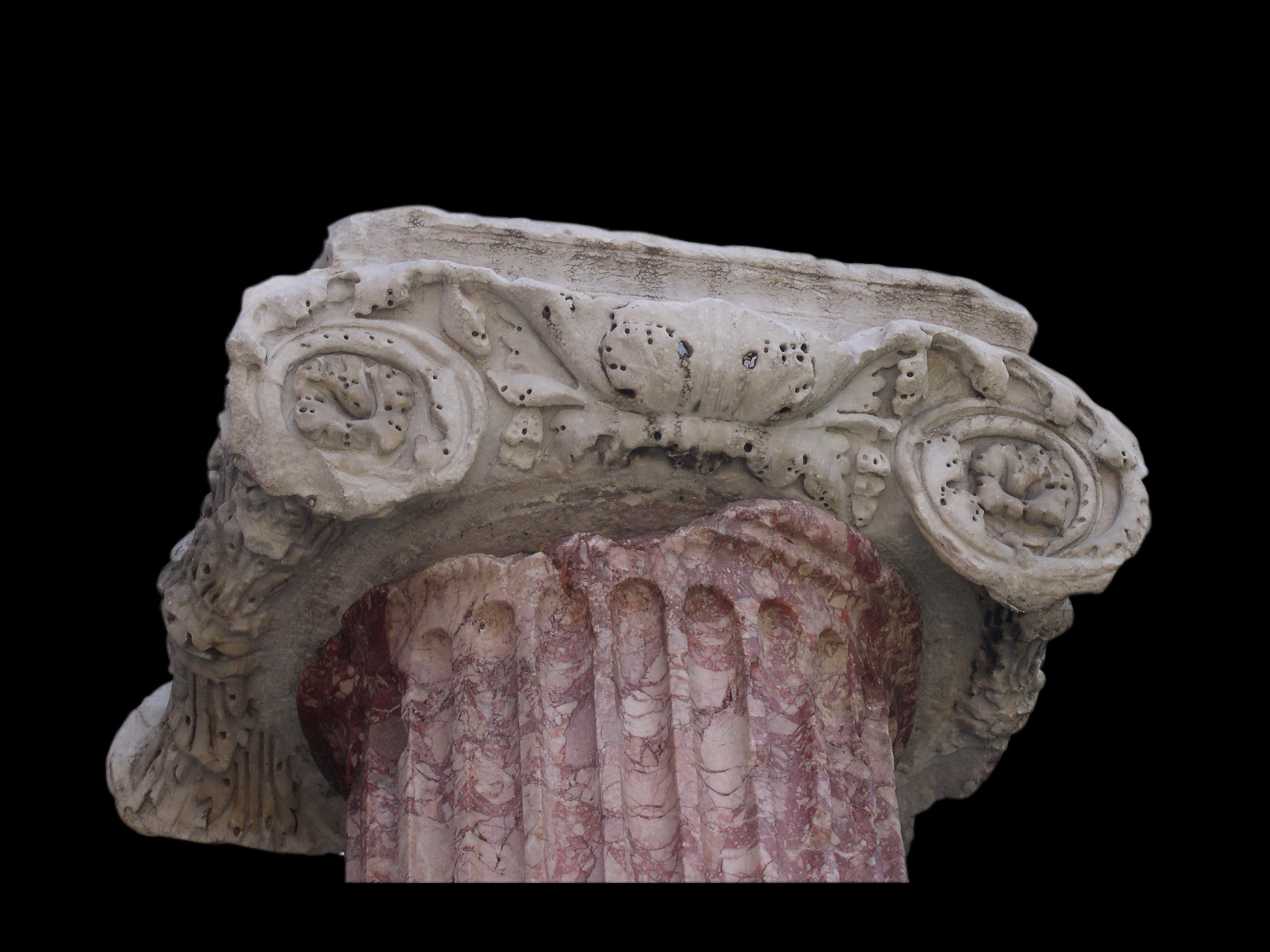Ionic column capital
Ionic column capital formed by a square abacus, carved with a thin fillet followed by a large cavetto moulding, resting over the channel of the volutes, the latter devoid of the upper margin and decidedly set back from the volutes themselves, with which it is no longer organically connected. Instead of the canonical egg-and-dart ornament, the echinus is here completely taken up by an acanthus tuft with large, trilobed central leaf from which spring two symmetrical wreaths that coil into a spiral ending in a bell-shaped flower, thus taking the place of the volutes’ tracing. The tuft’s central leaf, the lateral wreaths and the flower covering the spiral appear to be carved with moderate plasticism and worked with a redundant use of the drill, patent in the tiny holes employed in a rather abstract manner as a means to suggest the division of the lobes and the indented margins of the foliage. On the sides, volutes are connected by means of a richly ornated bolster: two crowns of acanthus leaves that show small drop-shaped voids and the page thickly covered with parallel and almost horizontal ribs, abstractly rendered with deeply drilled grooves; at the centre the leaves are held together by a triple baltheus, carved with a very narrow strip of scaled leaves sided by astragals with spherical beads and thin reels. On the whole the capital is marked by its highly decorative features, with vegetal ornaments that entirely fill up not only their canonical space, such as the bolster, but also those parts which are normally taken up by other forms of decoration, for example the echinus. Precise parallels for the acanthus tuft occupying the echinus are lacking, yet the capital finds close comparisons in the Ionic exemplars originally carved for the Baths of Caracalla and reused in the Church of S. Maria in Trastevere, with which it has in common the bolster’s exuberant ornamentation and the wreath covering the spirals. Small drill holes used to suggest indented margins are typical of the artefact produced in the course of the Severan period, a thing which, together with the comparisons just mentioned, allows to date our capital to the early III century AD.







